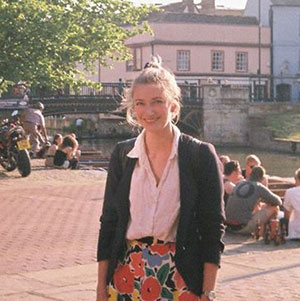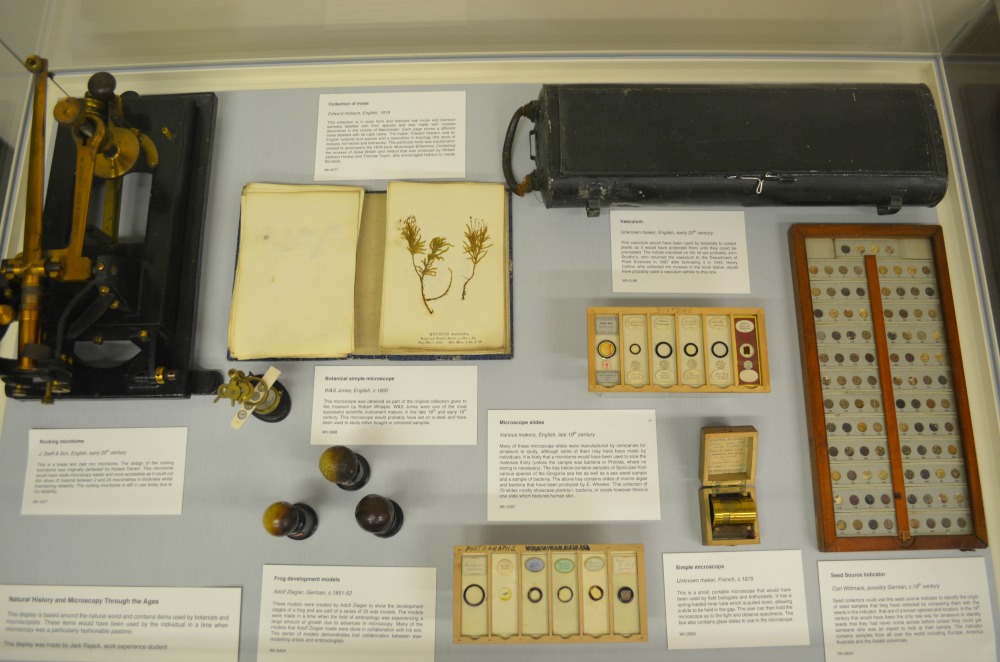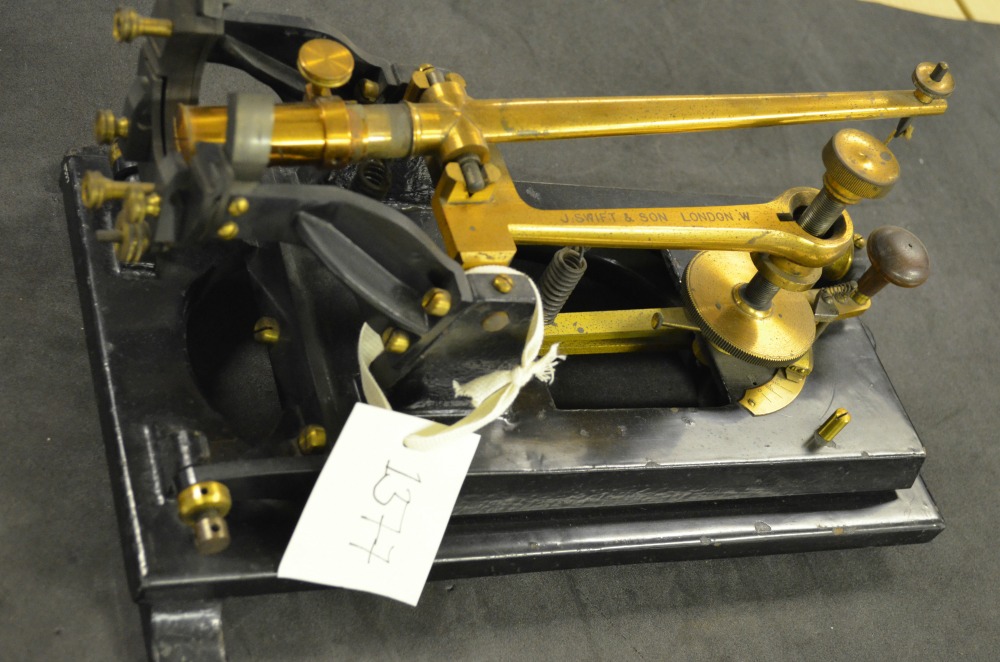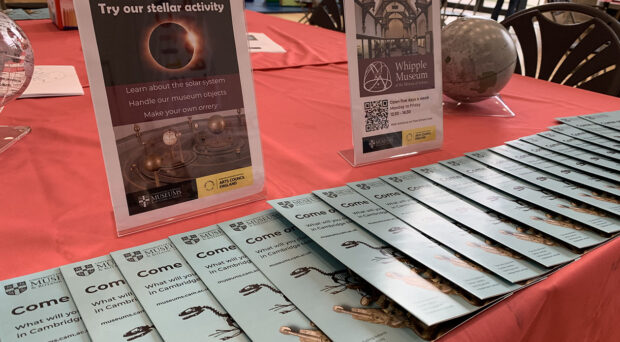Jack Rajack, our latest work experience student at the Whipple Museum of the History of Science, recently helped to reinvigorate an old Whipple work experience tradition: that the student would get to sample aspects of exhibitions, curation, and collections management by creating their own display case in the museum.
We are currently redeveloping our New Gallery, which will shortly be renamed Discover: Science in the Home and School. For the time being, the museum will have a permanent display that is assembled by work experience students (and perhaps other contributors in the longer term). Jack has set a high standard for the subsequent curators. His display, Natural History and Microscopy through the Ages is fascinating and the theme is delivered with intelligent nuance. On the last day of his work experience, Jack asked, “Is this how long it usually takes for museums to put a display together?”… If only!!
What follows is a report of his take on the experience, as well as his encounters with historic scientific instruments. Jack writes…
“I am just finishing my week-long work experience placement at the Whipple Museum of the History of Science. In my time at the Whipple Museum I have enjoyed discovering how the museum works as well as researching the history of some of its artefacts which I have been doing as part of the natural history display that I have been putting together during my placement.
“My favourite object in the museum that I have encountered would have to be one of the 39 microtomes in the collection; I have been researching one of them this week and have found an interest in them, despite having had no prior experience with them or even knowledge of them.” (For the non-scientists reading, a microtome is a tool used to create extremely thin slices of material.)
“I was fascinated by Horace Darwin’s rocking microtome design specifically and was amazed by the accuracy of the microtome that he managed to produce. The fact that he was able to cut slices as thin as 2 micrometres thick amazed me especially as the instrument itself is large and relatively simplistic. I was also surprised to learn that to this day the rocking microtome is the recommended apparatus for Biology and Pathology students.
“This placement has allowed me to understand the logistics of museum work and the way that historic objects are preserved and protected for the enjoyment of future generations. I would firmly recommend the Whipple to anyone who is considering work experience, whether they are interested in museums or not, as it is a good way to gain insight into museum work and the way artefacts are preserved and protected for the future. It also allows you to experience museum work in a smaller setting than many other museums whilst showing you the same key skills needed.
“This placement has definitely made me consider museum work as a future career path and has highlighted to me the great work that museums do for education, the community and future generations.” – Jack Rajak, work experience student, Whipple Museum of the History of Science.









